Last updated on March 2nd, 2022
Our site is reader supported, this means we may earn a small commission from Amazon and other affiliates when you buy through links on our site.
Every gardener should have the opportunity to grow clematis. If you already have one in your garden no doubt you are looking for a chance to put more anywhere you have room. There aren’t many plants that can really compete with the amazing beauty of clematis and the wide range of colours they come in. The first step to growing clematis successfully is ensuring you plant it in the correct way, giving it the best chance of thriving. A few planting tips, such as planting slightly deeper at 6 inches below the surface have always worked well for us and helped to prevent clematis wilt.
Clematis Planting Guide
When you are growing a clematis the first thing you need to consider is which variety to choose. There were recently some new introductions that presented multiple hybrids to the marketplace and these clematises have become more popular with there being a wider variety of different choices. You want to bear in mind the colour of the flowers, the height at full maturity and the form.
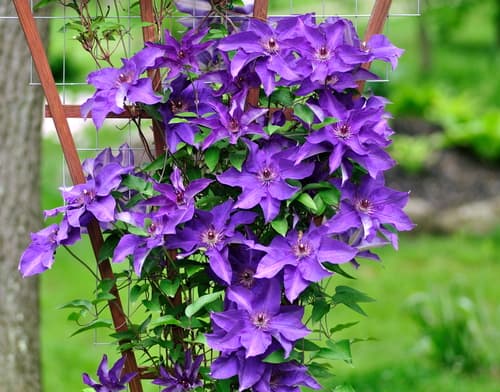
For example, the vigorous clematis vine will reach between 3 and 10 metres in height once fully established, however, there are also compact varieties that will fit well into smaller gardens if that’s what you have. For those who are growing on a small patio or in a pot, the shorter versions are obviously the ideal choice, and you can also get some that grow better in shadier parts of the garden.
The standard clematis flower ranges in its flower size, from 6-7 petals across, but there are also varieties with bell-shaped flowers and even some that produce double flowers. The quintessential colour is purple in all varieties, however, you will be able to find lavender, white, red wine and even a handful of yellow flower options, one example being the clematis tangutica.
It might take several years for your clematis to reach full maturity and start to flower with regularity. That being said, if you are purchasing one from a nursery it is in your best interest to find one that is already a few years old so that you can shorten the waiting time with which you must contend. Usually, clematis sold in 2 or 3-litre pots is perfect. It can already take at least one season for the roots to establish themselves in the ground (or in a pot) which means you won’t get flowers right off the bat, although you often do. Look for one that has strong, vigorous growth in terms of the branches and the stems.
Planting Clematis
Once you have decided to grow a clematis you need to figure out where to plant it in your home. Ideally, you want a very sunny spot. Some varieties bloom in the shade but most of them need at least six hours of sun each day in order to reach their full potential. They prefer moist, moist well-drained soil that is slightly alkaline or neutral. If the soil you have is already acidic you can add some garden lime periodically or some wood ash to sweeten it a bit.
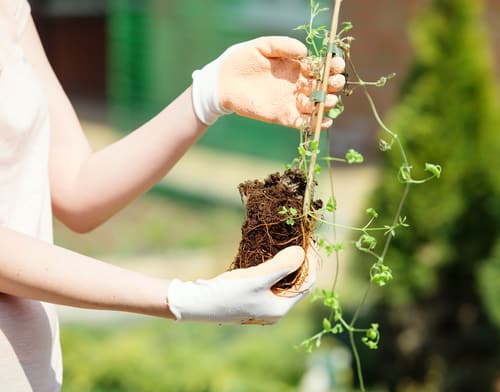
Preparing the planting hole
When you are ready to plant, dig a large hole that is slightly bigger than the size of the pot in which the clematis was supplied. Add compost to the hole as well as fertiliser such as bonemeal and mix it in thoroughly in preparation for planting the clematis. Never put a handful of bonemeal into the hole and place the roots on top because this will burn the roots, always mix it in well with the surrounding soil.
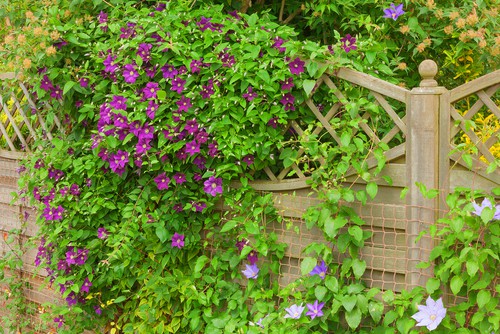
Plant 2-3 inches deeper than it was in the original pot
When you set the plant inside its new home be very gentle. Whether you are placing it in a pot or in the ground the roots and the crown can break easily, so you want to make sure for that significantly larger plant that you have someone there to help you if necessary. It should be buried slightly deeper than it was already growing in the pot and remove any leaves that would be under the soil. Usually planting it around 2-3 inches deeper works well and helps prevent clematis wilt.
Water well and mulch to conserve moisture
Once you have planted your clematis it is time to water. Water it weekly during the first season so that the roots get established and thereafter you can reduce the amount of watering that is required. If we have very warm weather (yes we do sometimes get good weather in the UK!) you may need to water it daily. To help conserve moisture, mulch around the base of the plant but do not mulch immediately against the crown where the vines start to emerge.
Clematis are happiest when their roots are placed in the cool shade but within the warm sun for their foliage, which is why mulching around the roots will help to keep that soil level cooler but still allow your clematis to access full sunlight without overheating.
How to Support Your Clematis
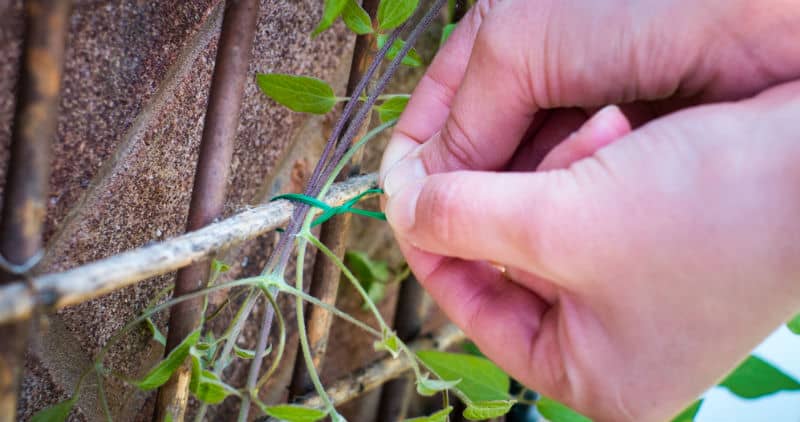
Once you have decided on the location and planted your clematis you need to have an idea of how you will support it. There are different types of clematis that require a climbing wall or material of some sort. They will look for something to grab onto and if there isn’t anything present, they will turn into a tangled heap. So, it needs to climb by wrapping its leaf stems around something. These leaf stems aren’t very large so the easiest thing that it can cling to are wires placed horizontally or plastic netting fastened to a fence or trellis work. Most trellises if they have large gaps, can even do with some added wire in between. Again the more options you have for your plant, the better it will thrive.
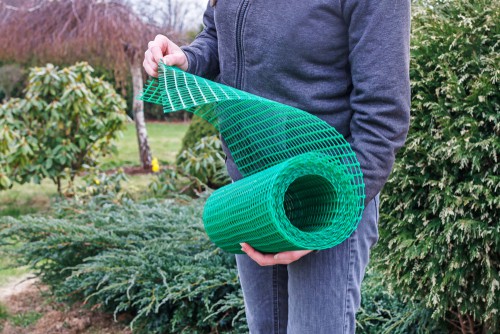
After you have planted your clematis and established a structure against which it can climb, keep it healthy by feeding it regularly, adding compost and fertiliser in early spring and then once again during the growing season. Most clematis will grow well left unpruned, except for the odd prune to keep it within the framework. However, you get the best flowering show if you prune to its pruning group. Some just need pruning lightly while others benefit from hard pruning to just above ground level. You can read about pruning groups here.
Images from Shutterstock.com


